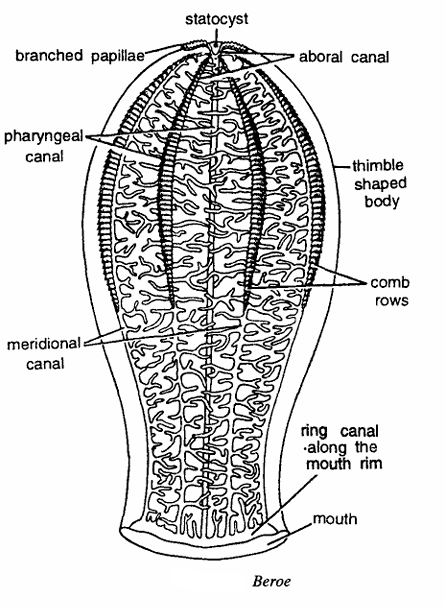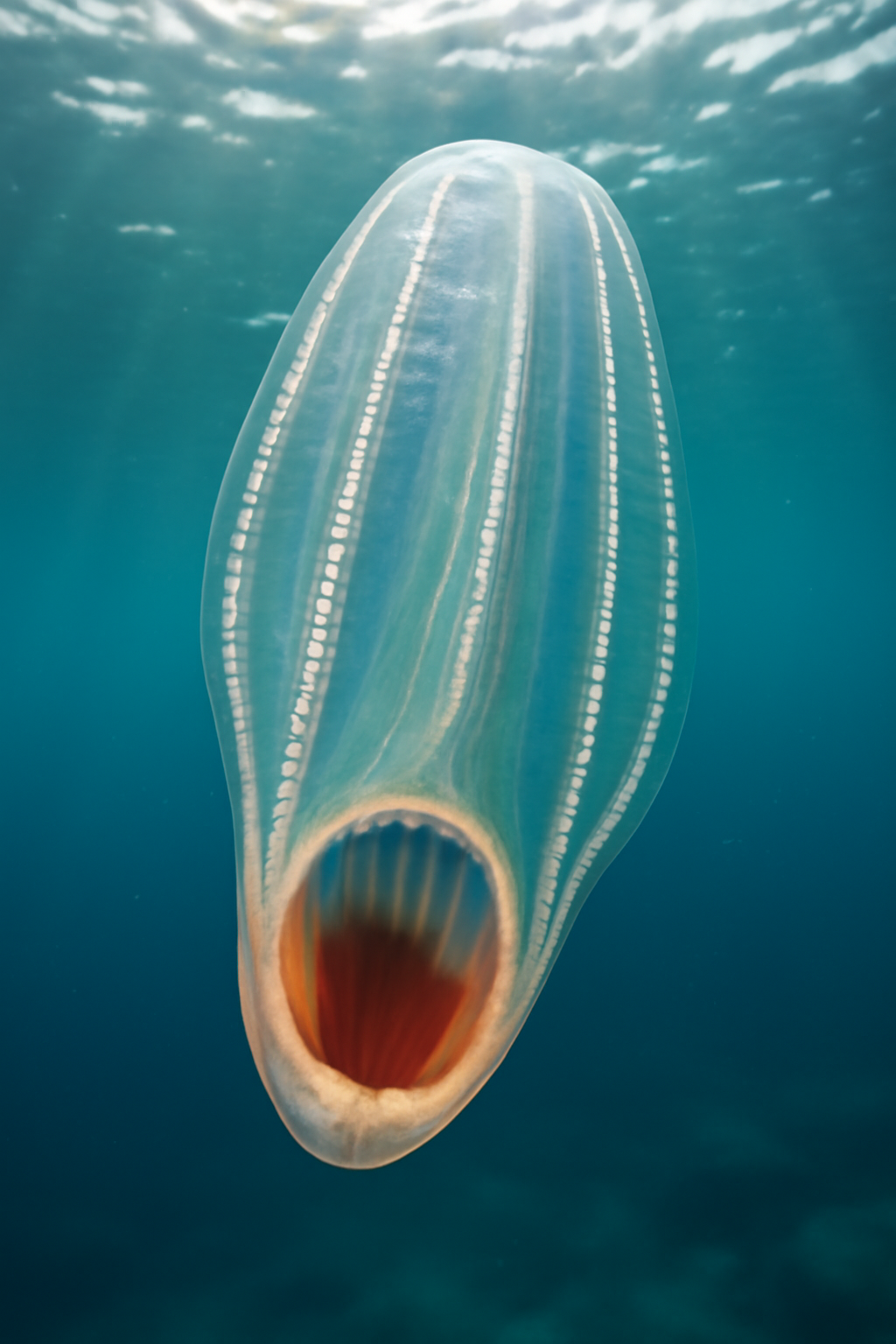Beroe: A Detailed Insight into Classification, Ecology, Morphology, and Behavior
Beroe is a genus of comb jellies (phylum Ctenophora) that stands out due to its active predatory lifestyle and unique morphological features. Unlike many ctenophores which feed passively on plankton, Beroe species are voracious predators specializing in feeding on other gelatinous zooplankton, particularly members of the Ctenophora like Mnemiopsis. This article provides an extensive synthesis of Beroe’s taxonomy, ecological preferences, morphology, identification, and its significance in marine ecosystems.
Classification of Beroe
- Kingdom: Animalia — Complex multicellular organisms with differentiated tissue
- Phylum: Ctenophora — Marine invertebrates characterized by ciliary comb rows used for locomotion
- Class: Nuda — Ctenophores that lack tentacles and are active predators
- Order: Beroida — Nuda order characterized by large oral openings aiding in engulfing prey
- Family: Beroidae — Family of strictly carnivorous, tentacle-less comb jellies
- Genus: Beroe — Medium to large-sized gelatinous carnivores with muscular bodies and wide mouths

Habit and Habitat
These species are found throughout the world’s oceans, inhabiting surface to midwater pelagic zones. Typically, they inhabit coastal, temperate, and tropical marine waters but are also reported in deep-sea environments. They show preference for open waters where their primary prey, other comb jellies such as Mnemiopsis, abound.
Their active swimming capacity enables them to pursue prey actively, contrasting with the drifting or passive ctenophores. Beroe’s predation is an essential regulatory mechanism in gelatinous zooplankton communities.
Geographical Distribution
This genus has a cosmopolitan distribution, being present in both hemispheres’ temperate and tropical waters. They are especially abundant in the Atlantic Ocean, the North Pacific, and parts of the Southern Ocean. Several species have been noted in coastal waters off Europe, North America, and Asia.
Their widespread distribution is attributed to the ability to inhabit varied marine environments and their role in controlling populations of invasive ctenophores.
General Characteristics
- Commonly called as Mitre jelly-fish.
- Body is conical or thimble-shaped, compressed in the lateral plane with no trace of tentacles or tentacle sheaths.
- Animal is of pink colour, measuring approximately 20 cm in height. Rounded aboral end contains statocyst and branched papillae.
- Major parts in the body consists of aboral canals, pharyngeal canals, meridional canals and comb rows.
- Truncated oral end contains mouth. Comb rows extend up to the middle of the body.
- Meridional and pharyngeal canals give off along their lengths numerous branched lateral diverticulae forming a network. Above canals unite to form a ring canal along the mouth rim.
- There are 4 comb plates running whole length or upto half depending on species.
- Animal is voracious . feeder, swallowing crustaceans and other ctenophores even larger than itself.
- Beroe species have an elliptical or cylindrical gelatinous body, often reaching up to 20 cm or more in length.
- Unlike other ctenophores, they lack tentacles entirely; instead, they possess a large muscular mouth opening that can engulf prey whole.
- Their bodies are covered with about 8 rows of ciliary comb plates used for propulsion; cilia beat rhythmically to facilitate movement.
- They possess sensory organs such as statocysts aiding in balance and orientation during swimming.
- Internally, their pharynx is lined with cilia to transport captured prey toward digestion sites.
- Coloration varies but is typically translucent or pale with occasional yellowish or purplish shades, often with streaks or lines formed by comb plate reflections.

Special Features
- Beroe’s feeding mechanism is highly specialized for predation on other ctenophores, capable of swallowing prey larger than itself via elastic oral muscles.
- Their muscular body facilitates rapid swimming and agility in water, vital for pursuing evasive prey.
- Their digestive system is adapted for rapid processing of gelatinous prey, contributing to their efficiency as predators.
- Beroe exhibits autotomy of body parts as an escape mechanism and can regenerate lost tissues.
- Some species display diel vertical migration behavior, moving to deeper waters during daylight and closer to surface at night.
Identification
Beroe ctenophores are identified by their large, tentacle-less bodies, broad oral openings, and muscular locomotion. Distinctive comb row patterns and body shape further facilitate morphological identification.
Behavioral observation of active predation on other ctenophores and rapid swimming is also a useful field marker distinguishing Beroe from other gelatinous zooplankton.
Ecological Role and Importance
They serves a crucial role in marine ecosystems as a top predator of gelatinous zooplankton, especially invasive ctenophores like Mnemiopsis leidyi, which can disrupt local fisheries and ecosystem balance. By controlling such populations, Beroe indirectly supports fish stocks and overall biodiversity.
Their presence is considered beneficial, and they have been investigated for use in biological control of invasive comb jellies.
Human Interaction and Research
Beroe poses no threat to humans but is of significant interest to marine ecologists studying predator-prey dynamics, invasion biology, and gelatinous zooplankton diversity.
Research into their swimming biomechanics, feeding strategies, and regeneration offers insight into ctenophore evolution and physiology.
References
- World Register of Marine Species (WoRMS) – Beroe genus
https://www.marinespecies.org/aphia.php?p=taxdetails&id=106357 - Encyclopedia of Life (EOL) – Beroe Overview
https://eol.org/pages/34279 - Marine Biodiversity Information Network – Beroe Studies
https://www.marinetracker.com/beroecnidaria - Marine Ecology Progress Series – Beroe Predation on Invasive Ctenophores
https://www.int-res.com/articles/meps_oa/m540p015.pdf - Fisheries and Oceans Canada – Comb Jelly Control Research
https://www.dfo-mpo.gc.ca/science/publications/beroepredation-2020-en.html
